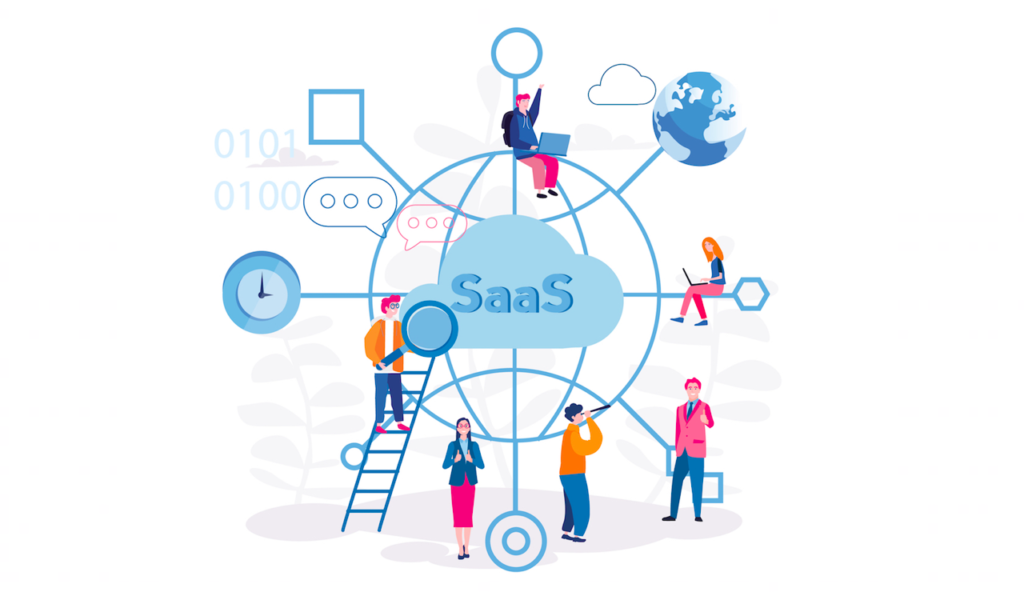Software-as-a-Service or more commonly known as SaaS, is a product licensing and delivery model in which software is hosted and licensed on a subscription basis, with the product being located on external servers as opposed to on servers located in-house. It is also called “on-demand software” or “web-hosted software”.
SaaS is commonly accessed through an internet browser, with clients signing into the system with the help of a username and password. Instead of installing software on their PC, every client can get to the software through the web. They need not install it on their computers separately to be able to access it.
The growth of Saas has witnessed a surge together with the growth of Cloud Computing. Cloud Computing is a tool through which technology services are offered through the internet; it regularly includes networking, servers, and data storage. SaaS has made the software updating process easier for organizations. Before it was accessible, organisations who wished to update the software on their PCs had to buy disks containing the updates which later had to be downloaded onto their systems.
SaaS is a feature of Cloud Computing, alongside infrastructure as a service (IaaS), desktop as service (DaaS), mobile backend as a service (MBaaS), managed software as a service (MSaaS), data center as a service (DCaaS), platform as a service (PaaS) and information technology management as a service (ITMaaS).
OPPORTUNITIES
Pandemic has affected nearly every industry around the globe, for some it created opportunities in abundance while for others it brought many challenges. The SaaS industry also witnessed the impact of the global pandemic. Let’s discuss in detail the opportunities and possible challenges for the SaaS industry in 2021.
The untapped potential is still huge
In reality, there is still a lot of undiscovered potential when it comes to opportunities for SaaS organisations. Many investors believe there’s a lot of potential, that there ought to be more SaaS organisations in the future than the ones existing now. There will be growth for the sector as many startups are coming forward with revolutionary ideas. And together these startups will explore all the possibilities for the industry.
emerging vertical specific SaaS applications
There is a famous idiom that goes “the riches are in the niches”. With SaaS, this is not just an idiom. Vertical SaaS companies have the biggest part of the general SaaS market, and these kinds of organisations will in general experience quicker development than level organisations will. If you are unaware of this terminology: a vertical specialty is planned for a particular kind of business, while a horizontal specialty is for a particular use case required by a business.
Veeva Systems – a provider of cloud-based CRM and content management solutions for the life sciences industry – went from zero to $2.4 billion in under 6 years raising less than $10 million.
Forbes
Entrepreneurs and workers prefer using devices that are planned explicitly to fulfil the necessities of their industry. Vertical specialty SaaS applications can be simpler to advertise too. Therefore, due to the undiscovered potential, we’ll see a greater amount of vertical SaaS organisations rising in 2021.
practical applications of Machine learning and Artificial intelligence
Understanding the functions and applications of Machine Learning and Artificial Intelligence and utilising these advanced technologies in your everyday life are two fairly different things. While a lot of B2B representatives and entrepreneurs are using SaaS solutions at work, not many are consistently utilizing SaaS products that are fueled by ML and AI.
Businesses will continue to enjoy benefits of making more products that depend on ML and AI as these technologies promote personalisation, security and fraud discovery, medical services automation and many more functions. By providing the ability to learn from past experiences, SaaS models will help businesses to enhance the value of their product and augment their programs.

CHALLENGES
With the mergence of new technologies, the SaaS industry continues to witness rapid transformation and change. While the odds are in the favour of the SaaS industry, there is one challenge that might affect the seamless functioning of the industry.
Financing Environment
In 2021 and the year after that, the economy is likely to face recession and credit will, in general, evaporate in that kind of an environment. However fortunately for SaaS, bank obligation has never truly been accessible, so it’s improbable that this situation will have a lot of impact. The new type of SaaS obligation, suppliers ought to have the option to continue giving credit through a recession, as they understand the genuine resource of repeating income. They may get more lenient in the measure of cash they will credit, particularly if information exchanges are down and agitation is up. But this will not have a huge impact on the industry as such.
2021 will be the main trial of the strength and versatility of SaaS organisations — however, if any further challenges come in the way, the industry is all set to face it!

